CHAPTER 26Chakra
Photo: Jane Matty and Carl Unkrich in "Chakra" At one point within the ballet, I choreographed the girls performing a salutation to the sun in a golden spot-light from stage right. Two of the girls, being religious fundamentalists, refused to do this. They believed it had some kind of demonic connection. Rather than explaining that it was merely a series of yoga poses that stretch and tone the body with the ultimate goal of a better state of being, I choreographed them leaving the stage during this health giving ritual and to return when it was over. That seemed to satisfy them. At the end of the ballet, as the male figure performed a whirling
dervish, the girls entered, each with a lit candle that they set on
the stage in the form of the six pointed Hebrew star of David, and
danced around it. Avoiding further opposition from the two
fundamentalists, I never told them what the geometric figure
represented. The lights went out as the dancers picked up the
candles and swirled. All the audience could see in the darkness were
the pinpoints of moving lights. The traveling lights could be space
ships or whatever. Everyone thought it was a spellbinding ballet. I
was even called a ‘genius’ by some. He had collapsed on a street in Stevenage, England, from a heart attack after doing some shopping for gifts. In his pocket was a plane ticket for Tucson. He had planned on leaving the following day with the gifts for his many American friends. I always enjoyed showing him America, as he had shown me England. He knew and loved America and especially Tucson. He twice visited and stayed with me in the little house on the Shaw property. Now that I had built a new house in the foothills I was anxious to show it to him. I wanted him to see how well I had done since my penniless days in England. He was excited about doing so, but it was not to be. Through Charles I had many friends in England, including his brother, still living in Cheshire. I even knew his public school teacher, who by then in her 80s visited New York City, alone. As her only American friend, I took her to dinner and to the Joffrey Ballet. This was quite an experience for her as the Joffrey company was dancing “The Crucible”, an all nude ballet and we were sitting in the front row! Fortunately, it was followed by “Cakewalk” that was Americana and far more presentable for her. Charles had given me an education. He introduced me to British and European culture. Without his help I would not have been able to become a choreologist. I will always be indebted to him for his guidance and concern for
my education and well-being, truly the best friend I ever had. Photo: Me on movie set of “High Chaparral” ranch in Arizona Territory, 1870 A lady I was seeing, Helena de Crespo, worked at a theatrical
agency. She told me to go to a particular audition for a movie role During the private interview with the choreographer, I instinctively got up and danced with this a nice young lady, in the character of Dr. Faust. This impressed her so that when I got home, my phone message said I had the job.
It was the middle of a hot Arizona summer. Studio air conditioners had to be turned off during the shooting periods as their sound would be recorded on film. Someone had placed a thermometer on the set and it often read 134 degrees Fahrenheit! In my elaborate makeup and costume, I had to be sprayed with cold water every five minutes. The fake theater was also filled with smoke from the cowboy and buckaroo extras in the audience, who occasionally shot at the actors. Kurt Russell as Wyatt Earp and Val Kilmer as Doc Holliday sat in a balcony. The scene began with me sitting at a desk studying my magical books. I was told the desk had been the one Sydney Greenstreet sat at in “The Maltese Falcon”. Four other dancers and the female star, Dana Delaney as the Devil were dancing around me. She offered me a contract to sell my soul, which I signed with my own blood. Then I danced with her. It was originally an eight-minute ballet, but because Dana Delaney, although a charming and talented actress, couldn’t dance so well, it was cut to about one minute. That was a pity as it was a nice little ballet. A corny melodrama, as it would have been back in those times in the far West. After three days of rehearsals the director was fired. The
choreographer, his wife, was also fired, but the ballet was by then
finished. I don’t know why they were fired, but the new director,
George Cosmatos,
I made a lot of money on that movie. Of course, compared to what the stars or even featured players make it was miniscule, but to me it was a lot. Residuals kept coming for years as it went to TV, then to video and DVD. Photo: Movie poster for "Tombstone" Unlike skimping ballet companies, Hollywood has everything at its fingertips: the best talents in every field, and money never seems to be a problem. The waste is tremendous. The four other dancers, though exquisitely costumed, are not seen at all in the film, accept in the curtain call. Because Dana Delaney is featured in the ballet, [it’s the first time Wyatt Earp, sees her dancing and falls in love] it was done in long shots. Following this experience I was called to be in several other films, in very minor, un-credited roles. Pontiac Moon Photo: On movie location at 6AM teaching children a Hungarian folk dance. At 4AM I would be driving to the location south of Tucson. The scene was a ranch in the 1840s. As the sun came up, I was in a meadow, choreographing a Hungarian folk dance for children. They were to appear in a Festival scene of Hungarian immigrants. The whole scene was to be interrupted by a battle with ranchers.
The Two Pigeons All scenery and costumes for every production, including “Petrushka” and “The Two Pigeons” were seized and had to be re-created.
Photo: A scene from "Two Pigeons" But “Two Pigeons” turned out a better production than before. The
original one I did for Balletfore was premiered at the Riverside
Theater in New York and subsequently toured the country. The
Riverside Theater renders a real service to the dance community with
its ambitious festivals, but the problem is the small stage size.
Balletfore numbered only 14 dancers, so they were able to dance full
out consistently. But their clean, soaring jumps traveled up, rather
than ahead. Dance Southwest in Tucson had a wide and deep stage.
Like my “Firebird”, it was actually better than the New York
production. The gypsy camp scene even had a convincing gypsy wagon.
Photo: Rodney Gustavson By the time I moved to Tucson and into semi-retirement, he had
left ABT and had returned back home. Every summer I taught for his summer intensive dance workshop with students from all over the country. “Khatchaturiana” was staged there twice, at the famous Lobero Theater, with costumes loaned from my Tucson Kalinka Russian dance group. I was able to use professional dancers from his company along with the students for this. One summer the Kalinin Russian Gypsy dance group, led by Alexander Kalinin performed an exciting presentation that they had done for quite a while in Las Vegas. It included my “Yablochka” [Russian Sailor’s Dance] that I had originally choreographed in Tucson, but this time with Sergei Domrachev from Moscow dancing one of the sailors, with gusto and high professionalism. Also, my own “Khorovod” [a Russian woman’s round dance] was on the same program. This is a dance with long skirts that reach to the floor, called "serafans" in Russian. Feet unseen, the dancers, skim across the stage in patterns, as if on roller skates. People often ask me how they do that. I answer that only the choreographer knows. It was the same choreography that my Kalinka group in Tucson were doing, and with the same costumes that I brought with me. Being professional dancers they performed it much nicer, but without the full orchestra and chorus as in Tucson. Later, both these dances of mine were performed at the Hollywood Bowl.
“Una Noche En Espana” was another presentation that I choreographed, using inspiration and material I had gathered during my tour in Spain with the Harkness Ballet.
First Visit To Republic Of China (Taiwan) The choreographer of this “Beauty And The Beast” was the most
unethical and reprehensible person in ballet that I had ever met.
Rude, patronizing, alcoholic, I couldn’t understand why Rodney kept
using him. The dancers were shocked by his attitude. Some even ventured to
tell him outright that he should give me some respect rather than
the constant insults, but it had no effect. Not only that, his
choreography was repetitious and banal. He was not going to
accompany us to China, which was a relief for all.
The theaters were huge and well attended, the hotels first class. We spent two weeks in the ROC, performing in six major cities:
Kaoshsiung, Pingtung, Hsintsu, Taichung, Chiayi and finishing off in
Taipei.
|
 “Chakra”
- a center of life energy in the body according to yogic philosophy
- had new age music by the Mannheim Steamroller. It was originally
called ‘The Seventh Chakra”, the theme being spirituality. I used
six girl dancers and one male dancer. He could be the Hindu god
Krishna, or a Christ figure. It didn’t matter.
“Chakra”
- a center of life energy in the body according to yogic philosophy
- had new age music by the Mannheim Steamroller. It was originally
called ‘The Seventh Chakra”, the theme being spirituality. I used
six girl dancers and one male dancer. He could be the Hindu god
Krishna, or a Christ figure. It didn’t matter. because
it is a ‘right to work’ state and is a lot cheaper. If you have seen
a John Wayne movie, you have probably seen Old Tucson.
because
it is a ‘right to work’ state and is a lot cheaper. If you have seen
a John Wayne movie, you have probably seen Old Tucson.  Every
morning at the crack of dawn, I had to drive over the mountain pass
from my house to the film studios out in the desert. This was
because of the special makeup that had to be applied. I sat in the
trailer along with all the stars for an hour each morning as the
makeup artist made me look very old.
Every
morning at the crack of dawn, I had to drive over the mountain pass
from my house to the film studios out in the desert. This was
because of the special makeup that had to be applied. I sat in the
trailer along with all the stars for an hour each morning as the
makeup artist made me look very old. made
it into a real blockbuster movie. Frankly, I didn’t care for it,
being far too violent for my taste.
made
it into a real blockbuster movie. Frankly, I didn’t care for it,
being far too violent for my taste.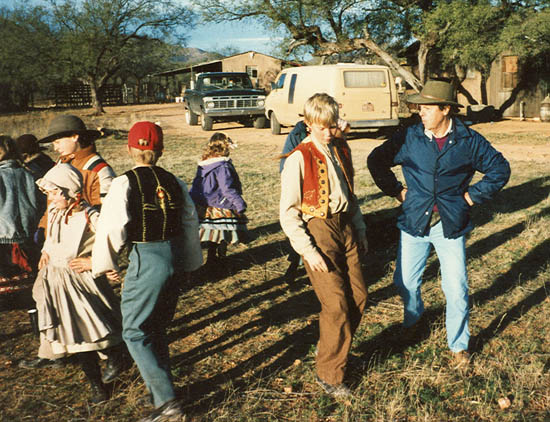 did
choreography. This was of course the same situation as with the
opera company, a strategy to avoid paying me more.
did
choreography. This was of course the same situation as with the
opera company, a strategy to avoid paying me more.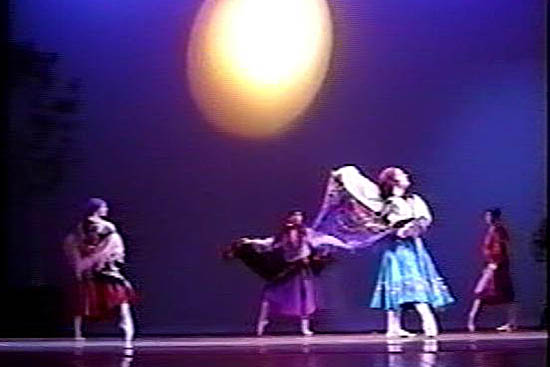
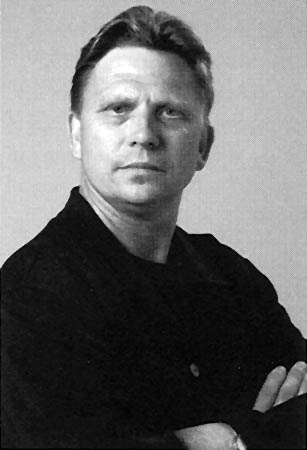 Prince,
who merely sat alongside Clara at a table of sweets during all of
Act Two. At age 14, he was the only boy in Tucson who showed promise
as a dancer. When he got a bit older he left Tucson and eventually
wound up in the corps de ballet of American Ballet Theater. It
happened to be at the same time that I was on the ABT staff as
resident Choreologist.
Prince,
who merely sat alongside Clara at a table of sweets during all of
Act Two. At age 14, he was the only boy in Tucson who showed promise
as a dancer. When he got a bit older he left Tucson and eventually
wound up in the corps de ballet of American Ballet Theater. It
happened to be at the same time that I was on the ABT staff as
resident Choreologist. 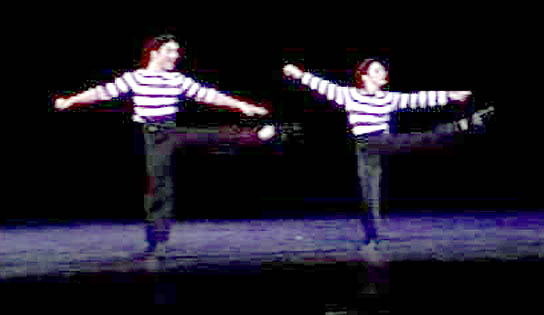
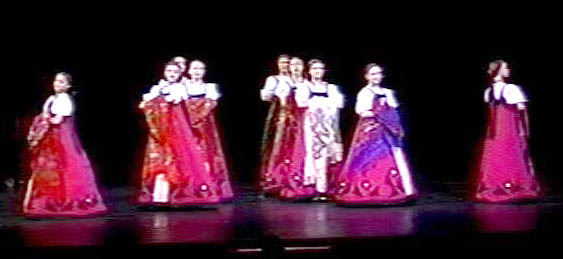
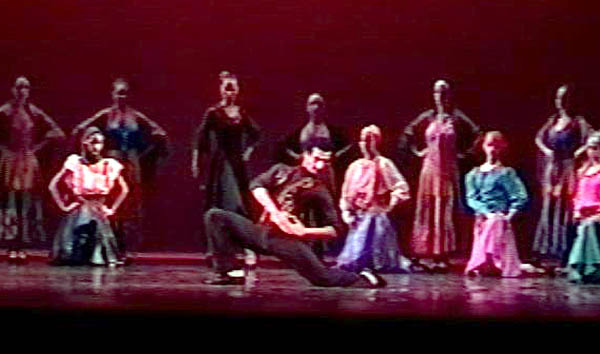 When
the State Street Ballet company was to make a tour of The
Republic Of China, dancing ‘Beauty And The Beast”, Rodney
asked if I would like to come along and dance the role or
Beauty’s father. In a burst of enthusiasm I said yes.
When
the State Street Ballet company was to make a tour of The
Republic Of China, dancing ‘Beauty And The Beast”, Rodney
asked if I would like to come along and dance the role or
Beauty’s father. In a burst of enthusiasm I said yes.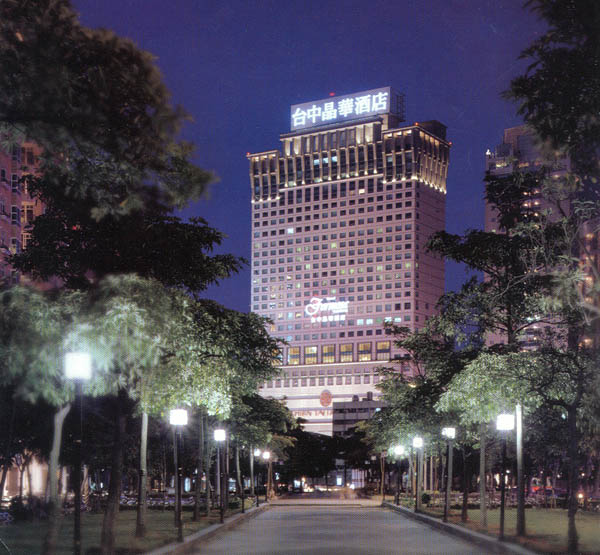 From
LAX airport, we boarded a giant China Airways plane that seemed to
be taking all of Los Angeles with it when it took off! Sixteen hours
later we arrived in Taipei, then another plane for Kaohsiung, a huge
city that seemed to be our home base. I did the daily class with the
other dancers, mostly teenagers or in early 20s. Being much older
than they, I kept to myself most of the time. On days off I visited
museums and department stores.
From
LAX airport, we boarded a giant China Airways plane that seemed to
be taking all of Los Angeles with it when it took off! Sixteen hours
later we arrived in Taipei, then another plane for Kaohsiung, a huge
city that seemed to be our home base. I did the daily class with the
other dancers, mostly teenagers or in early 20s. Being much older
than they, I kept to myself most of the time. On days off I visited
museums and department stores.